Newgrange Winter Solstice
On the days around the Winter Solstice when the skies are clear the rising sun illuminates the passage and chamber of the 5000 year old megalithic passage tomb at Newgrange in the Boyne Valley. Above the entrance to the passage of the mound there is a opening called a roof-box. On mornings around the winter solstice a beam of light penetrates the roof-box and travels up the 19m (62ft) passage and into the chamber. As the sun rises higher, the beam widens so that the whole chamber is dramatically illuminated.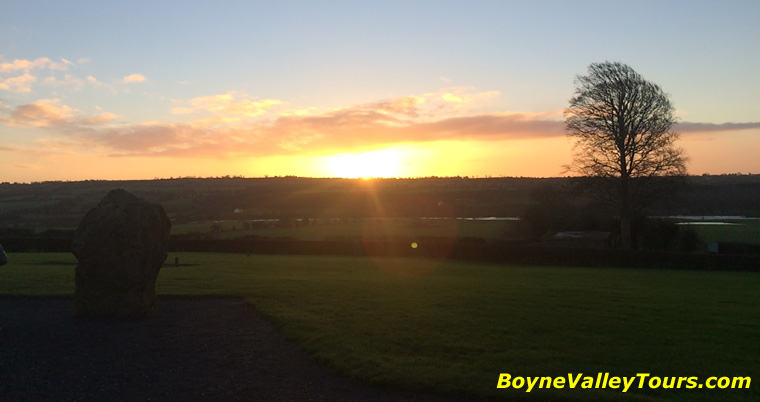
The rising sun
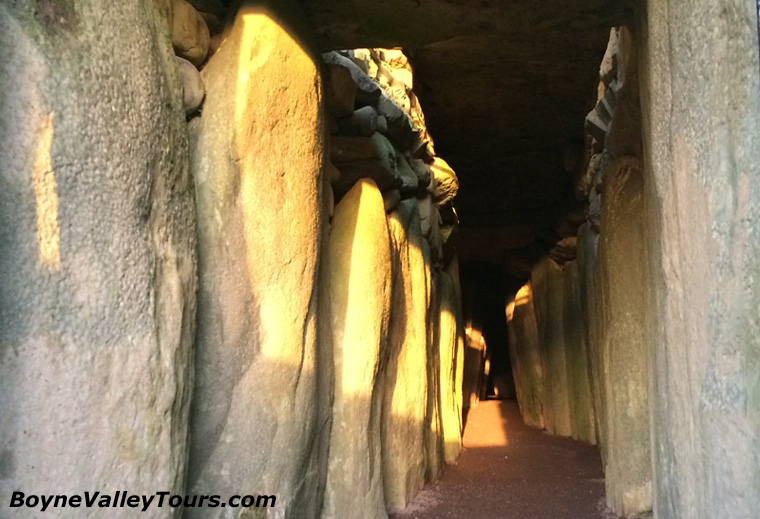
Winter Solstice Sunbeam in the Newgrange passage
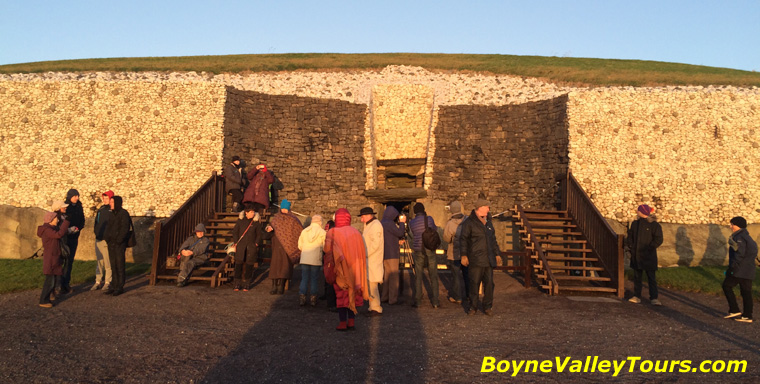
The white quartz glows in the sunlight at Newgrange
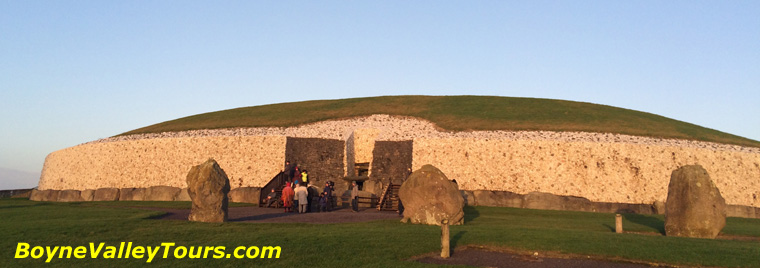
A perfect sunrise to illuminate the passage and chamber at Newgrange
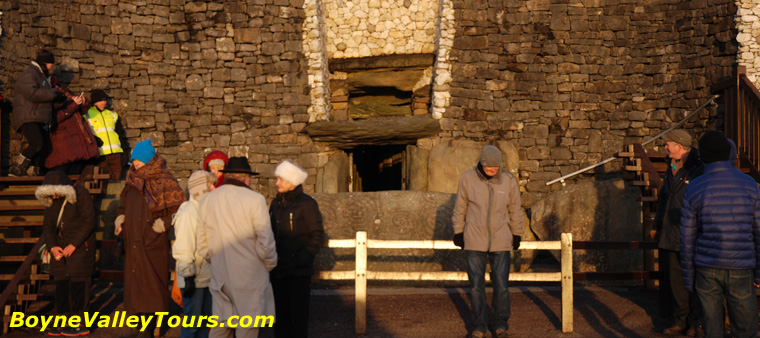
The solstice lottery winners experiencing a wonderful sunrise in the Newgrange chamber while the people outside waited patiently for their turn to enter the chamber
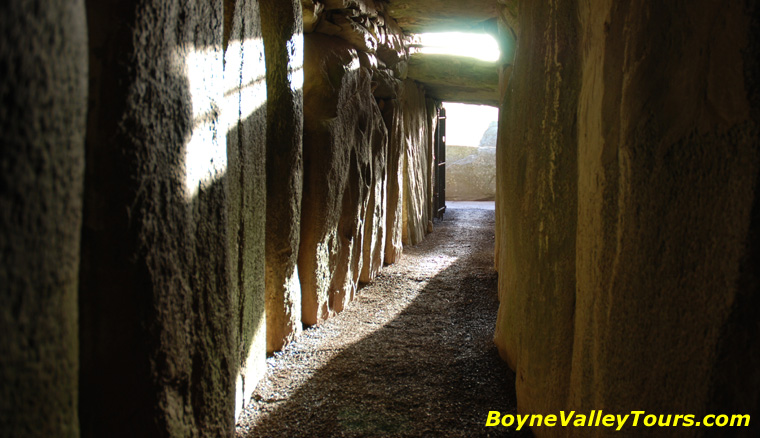
The sunbeam retreating from the passage at Newgrange
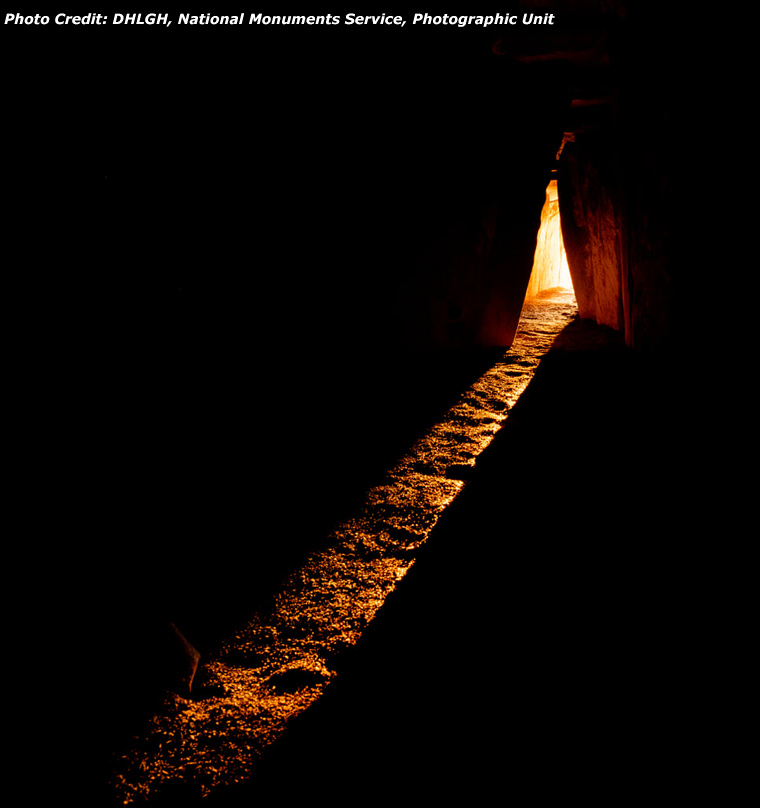
The sunbeam in the chamber at Newgrange
The alignment is such that although the roofbox is above the passage entrance, the light hits the floor of the inner chamber. Today the first light enters about four minutes after sunrise, but calculations based on the precession of the Earth show that 5,000 years ago first light would have entered exactly at sunrise. The solar alignment at Newgrange is very precise compared to similar phenomena at other passage graves such as Dowth or Maes Howe in the Orkney Islands, off the coast of Scotland.
Book a Private Day Tour
Boyne Valley Tours Privacy, Terms and Conditions
Boyne Valley Tours Privacy, Terms and Conditions
Home
| Private Driver Tour
| Cruise Excursion
| Places
| Ireland's Ancient East
| About Us
| FAQs
| Contact
| Newgrange
| Knowth
| Hill of Tara
| Monasterboice
| Trim Castle
| Mellifont Abbey
| Slane
